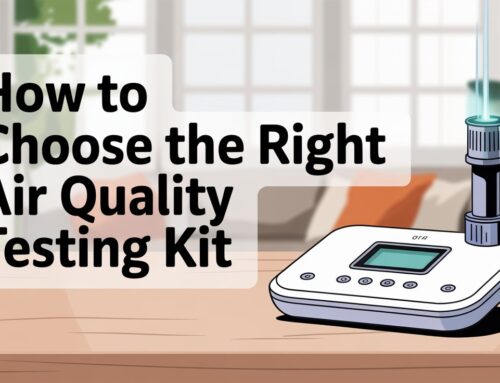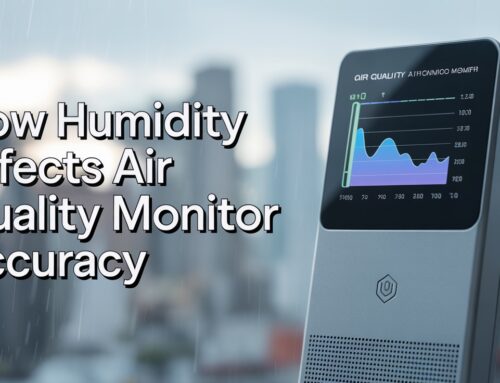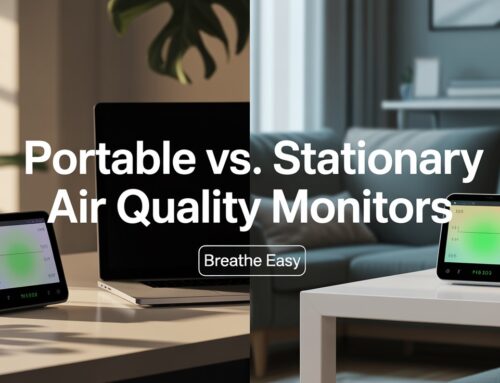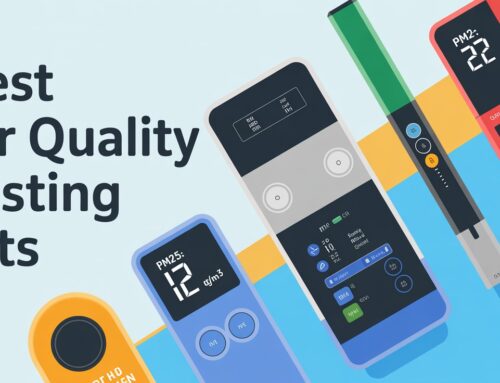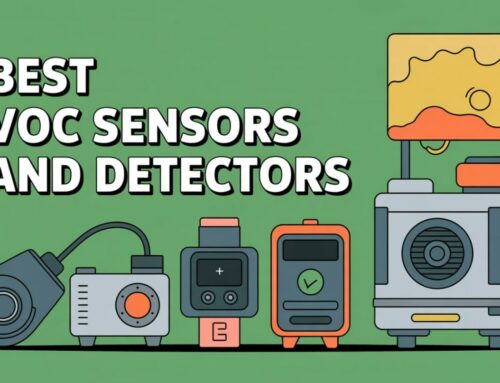July 3, 2025
Air Quality Sensors Guide: Types, Technology & Applications
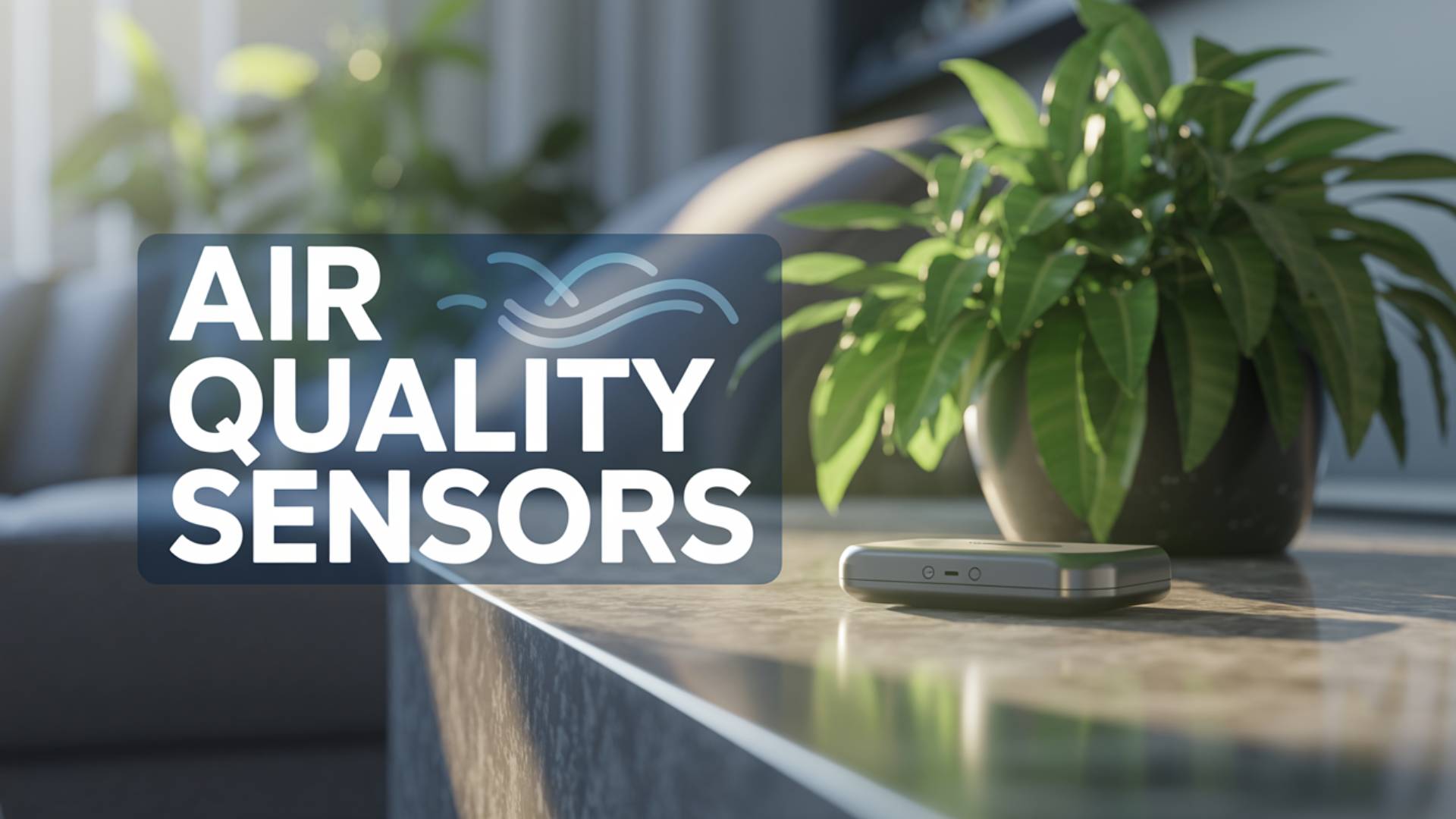
🌬️ Your Complete Guide to Air Quality Sensors
Learn how air quality sensors work, discover which type is right for your needs, and take control of the air you breathe every day. Expert guidance from certified professionals.
⚡ Quick Facts About Air Quality
The air you breathe matters more than you might think. Every day, you take about 20,000 breaths, and the quality of that air directly affects your health, comfort, and well-being. Air quality sensors have become essential tools for monitoring the invisible pollutants that surround us, helping families and businesses create safer environments.
Whether you’re a homeowner worried about indoor air quality, a business owner ensuring employee safety, or simply curious about the technology behind air monitoring, this guide will help you understand everything you need to know about air quality sensors.
🔬 What Are Air Quality Sensors?
Simple Definition: Air quality sensors are electronic devices that detect and measure pollutants in the air around you. Think of them as tiny environmental detectives that work 24/7 to identify harmful particles and gases that you cannot see, smell, or taste.
These sensors monitor various pollutants including dust particles (PM2.5 and PM10), volatile organic compounds (VOCs), carbon monoxide, nitrogen dioxide, and many other substances that can affect your health. Modern sensors are small, affordable, and smart enough to send real-time data to your smartphone or computer.
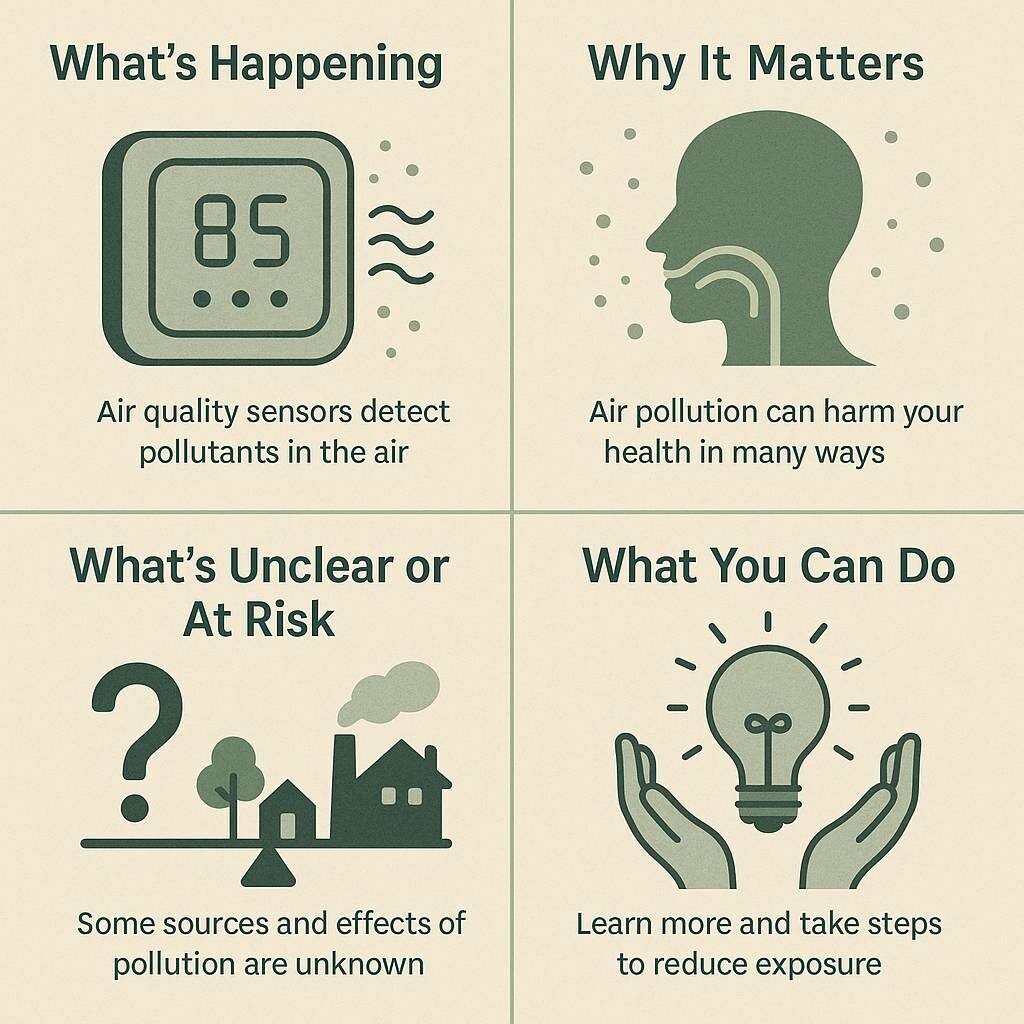
The technology has advanced significantly in recent years. What once required expensive laboratory equipment can now be done with compact devices that cost a fraction of traditional monitoring systems. This advancement has made air quality monitoring accessible to everyone, from individual homeowners to large corporations.
🏠 Why Air Quality Monitoring Matters for Your Health
Health Alert: Poor air quality kills approximately 4.2 million people worldwide each year, according to the World Health Organization. While that might seem alarming, the good news is that monitoring and improving air quality can prevent many health problems before they start.
Indoor air can be 2-5 times more polluted than outdoor air, making residential air quality testing crucial for protecting your family’s health. Common indoor pollutants include dust mites, pet dander, mold spores, cleaning chemical fumes, and gases from building materials.
🚨 Early Detection
Air quality sensors help you identify problems early, allowing you to take action before pollutants reach dangerous levels. This proactive approach can reduce allergies, prevent respiratory problems, and improve sleep quality.
💼 Business Benefits
For businesses, maintaining good air quality isn’t just about health—it’s about productivity and legal compliance. Poor air quality can reduce employee performance by up to 15% and lead to increased sick days.
⚙️ How Air Quality Sensors Actually Work
Air quality sensors use several clever technologies to detect different types of pollutants. Understanding how they work helps you choose the right sensor for your needs and interpret the data they provide.
💡 Light Scattering Technology for Particles
Most particle sensors use laser light to detect dust and other tiny particles in the air. When particles pass through a laser beam, they scatter light in different directions. The sensor measures this scattered light to determine how many particles are present and their approximate size.
Why This Matters: This technology can distinguish between PM2.5 (fine particles smaller than 2.5 micrometers) and PM10 (particles smaller than 10 micrometers). PM2.5 particles are particularly dangerous because they’re small enough to penetrate deep into your lungs and bloodstream.
⚡ Electrochemical Detection for Gases
Gas sensors often use electrochemical cells that create electrical signals when they encounter specific gases. For example, a carbon monoxide sensor contains chemicals that react with CO molecules, producing a measurable electrical current proportional to the gas concentration.
🧠 Smart Algorithms and Data Processing
Modern sensors don’t just detect pollutants—they interpret the data using sophisticated algorithms. These algorithms compensate for temperature and humidity changes, filter out false readings, and convert raw sensor data into easy-to-understand measurements.
📊 Types of Air Quality Sensors and What They Detect
Understanding different sensor types helps you choose the right monitoring solution for your specific needs and concerns.
🌫️ Particulate Matter (PM) Sensors
Measure tiny particles suspended in the air from dust, pollen, smoke, and vehicle emissions.
- PM1: Ultrafine particles smaller than 1 micrometer
- PM2.5: Fine particles smaller than 2.5 micrometers (most health-critical)
- PM10: Particles smaller than 10 micrometers (visible as dust)
🏭 Gas Detection Sensors
Detect invisible gases that can be harmful even in small concentrations.
- Carbon Monoxide (CO): Deadly, odorless gas from faulty appliances
- Carbon Dioxide (CO2): Indicates ventilation quality
- VOCs: Chemicals from paints, furniture, cleaning products
🌡️ Environmental Condition Sensors
Monitor factors that affect both comfort and air quality.
- Temperature & Humidity: Influence pollutant behavior
- Pressure: Affects pollutant movement through buildings
Expert Tip: If you’re concerned about common indoor air pollutants, PM2.5 sensors are essential because these particles bypass your body’s natural filtration systems and cause serious health problems.
🏢 Real-World Applications: Where Air Quality Sensors Make a Difference
Air quality sensors aren’t just gadgets—they’re practical tools that solve real problems in various settings.
🏡 Home and Residential Use
Smart homeowners use sensors to protect their families and maintain comfortable living spaces. These sensors help detect problems like poor ventilation, hidden mold growth, or pollutants from nearby construction.
Professional air quality testing services can help establish baseline measurements and identify specific problems.
🏢 Commercial and Office Buildings
Businesses use sensors to maintain healthy work environments and comply with safety regulations. Commercial air quality testing helps identify ventilation problems and chemical exposure risks.
🏫 Schools and Healthcare Facilities
Educational institutions and healthcare facilities have special requirements due to their vulnerable populations. Sensors help maintain safe environments and quickly identify problems affecting large numbers of people.
🏭 Industrial and Manufacturing
Industrial facilities use specialized sensors to monitor workplace safety and environmental compliance, detecting hazardous gases and ensuring worker safety in challenging environments.
🎯 Choosing the Right Air Quality Sensor for Your Needs
Selecting the appropriate air quality sensor depends on your specific situation, budget, and monitoring goals. Here’s how to make an informed decision.
💰 Consumer vs. Professional Grade Sensors
| Feature | Consumer Sensors ($50-$300) | Professional Sensors ($500-$5,000+) |
|---|---|---|
| Accuracy | Good for trends and general awareness | Laboratory-grade precision |
| Pollutants Detected | PM2.5, PM10, sometimes VOCs or CO2 | Multiple gases, particles, detailed analysis |
| Calibration | Pre-calibrated, minimal maintenance | Regular professional calibration required |
| Best For | Home monitoring, basic awareness | Regulatory compliance, detailed analysis |
Recommendation: For most homeowners, consumer-grade sensors provide sufficient information to maintain healthy indoor environments. However, if you have specific health concerns or need precise measurements, professional testing services offer more accurate and comprehensive analysis.
🔧 Key Features to Consider
✅ Essential Features
- Real-Time Monitoring: Continuous data vs. periodic measurements
- Smartphone Connectivity: Mobile apps with alerts and data visualization
- Multi-Pollutant Detection: Better value than single-purpose devices
- Calibration Options: From reputable manufacturers
⚠️ Watch Out For
- Placement Sensitivity: Avoid direct pollution sources
- Environmental Factors: Temperature and humidity effects
- Sensor Drift: Gradual accuracy loss over time
- False Readings: Cross-sensitivity to other pollutants
⚖️ Understanding Accuracy and Limitations
While air quality sensors are powerful tools, understanding their limitations helps you use them effectively and interpret their data correctly.
🎯 Accuracy Expectations
Consumer-grade sensors typically provide accuracy within 10-30% of actual pollutant concentrations. This accuracy is sufficient for identifying trends, detecting problems, and monitoring improvements, but may not meet regulatory or medical requirements.
Important: Professional-grade sensors offer better accuracy (often within 5-10%) but cost significantly more and require regular maintenance and calibration. For most applications, consumer sensors provide adequate information to maintain healthy environments.
🔄 Maintenance Requirements
- Regular Cleaning: Keep sensors free of dust and debris
- Calibration Schedules: Annual for professional sensors, replacement every 2-3 years for consumer devices
- Battery Management: Ensure reliable power sources for accurate readings
🏥 Health Implications: What Your Sensor Data Means
Understanding how air quality measurements relate to health helps you take appropriate action to protect yourself and your family.
🚨 Dangerous Levels
- PM2.5: Above 35 µg/m³ unhealthy for sensitive groups
- Carbon Monoxide: Above 9 ppm can cause health problems
- Action Threshold: Sensitive individuals may need lower limits
👶 Vulnerable Populations
Children, elderly individuals, pregnant women, and people with respiratory conditions are more sensitive to air pollution and may need more frequent monitoring and lower action thresholds.
📈 Long-Term Benefits
Consistent monitoring and improvement can reduce asthma symptoms, improve sleep quality, enhance cognitive function, and prevent respiratory problems before they develop.
🔍 Professional Air Quality Testing: When to Call the Experts
While consumer sensors provide valuable information, some situations require professional expertise and laboratory-grade equipment.
🏠 Comprehensive Assessment Needs
Professional air quality testing services like Air Quality Testing Canada provide comprehensive analysis that goes beyond what consumer sensors can detect. Professional testing can identify specific pollutants, determine pollution sources, and provide detailed recommendations for improvement.
🏠 Real Estate Transactions
Home buyers often request professional testing to identify potential problems before purchase, including hidden mold, asbestos, or chemical contamination.
🏭 Regulatory Compliance
Businesses require professional testing to meet regulatory requirements and document compliance with workplace safety standards, especially in healthcare, food service, and manufacturing.
🛡️ Taking Action: Improving Your Air Quality
Understanding air quality is only the first step—taking action to improve it protects your health and enhances your quality of life.
🏠 Simple Steps for Immediate Improvement
💨 Increase Ventilation
Open windows when outdoor air quality is good, use exhaust fans in bathrooms and kitchens, and ensure HVAC systems are properly maintained. Good ventilation is often the most effective way to improve indoor air quality.
🚫 Control Pollution Sources
Choose low-VOC paints and furniture, store chemicals properly, and maintain appliances to prevent carbon monoxide leaks. Eliminating pollution sources is more effective than trying to clean polluted air.
🌪️ Use Air Purifiers Strategically
High-quality air purifiers with HEPA filters can remove particles and some gases from indoor air. Place purifiers in bedrooms and common areas where people spend the most time.
❓ Frequently Asked Questions
👨🔬 Expert Insights from Air Quality Testing Canada
This guide is brought to you by Air Quality Testing Canada, with over 15 years of experience in professional air quality testing. Our IICRC and IAQA certified experts have helped thousands of families and businesses across Ontario and Quebec create healthier indoor environments.
🏅 Our Certifications
- IICRC Certified
- IAQA Certified
- Indoor Air Quality Inspector
- Professional Inspector
Trusted by hundreds of satisfied clients with 5-star reviews
🎯 Your Next Steps: Building a Healthier Environment
Air quality sensors are powerful tools that put environmental health monitoring in your hands. Whether you choose consumer-grade sensors for basic monitoring or professional services for comprehensive analysis, understanding air quality is the first step toward creating healthier indoor environments.
Start by identifying your specific needs and concerns. Do you want general awareness of air quality trends, or do you need precise measurements for health or regulatory reasons?
🔍 Explore Our Services 📞 Get Professional Testing 📚 Learn MoreFor professional guidance and comprehensive air quality solutions, Air Quality Testing Canada provides expert services throughout Ontario and Quebec. Our certified professionals can help you understand your specific air quality challenges and develop effective solutions for creating healthier indoor environments.
🔗 Related Services and Resources
🏠 Residential Services
🏢 Commercial Services
🧪 Specialized Testing
📚 Educational Resources
🌟 Take Control of the Air You Breathe
Your health, comfort, and peace of mind are worth the investment in understanding and improving your indoor air quality. Whether you start with a simple consumer sensor or opt for comprehensive professional testing, taking action today protects your family’s health for years to come.
Ready to get started? Contact our certified experts at 1-866-528-2897 or visit our contact page to schedule your professional air quality assessment.
Monday to Friday, 8:00 AM – 3:00 PM | Serving Ontario and Quebec

